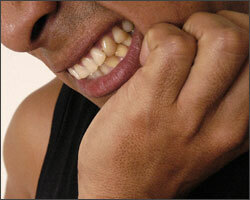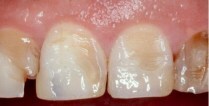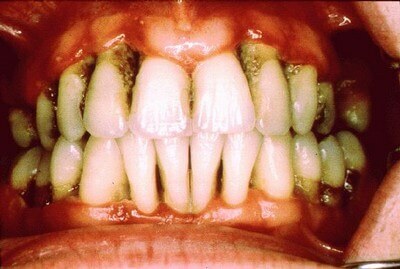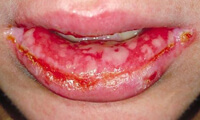Hyperesthesia of the teeth
 Hyperesthesia of teeth - increased sensitivity of tooth tissues to the effects of temperature, chemical and mechanical stimuli. Hyperesthesia of the teeth most often develops against the background of erosion of tooth enamel , increased erasability of enamel, dental caries, periodontal diseases, dental wedge defects and various non-carious processes. In some cases, hyperesthesia occurs without any apparent cause.
Hyperesthesia of teeth - increased sensitivity of tooth tissues to the effects of temperature, chemical and mechanical stimuli. Hyperesthesia of the teeth most often develops against the background of erosion of tooth enamel , increased erasability of enamel, dental caries, periodontal diseases, dental wedge defects and various non-carious processes. In some cases, hyperesthesia occurs without any apparent cause.
Symptoms of
Hyperesthesia of the teeth is quite diverse. There is a pronounced sensitivity to physical, chemical and temperature stimuli, a feeling of nausea appears. Painful sensations are intense, but quickly passing character. The power of pain varies from minor discomfort to very strong pulsating pains. Patients complain that they can not eat sweet, sour, salty;Can not breathe cold air;Food is only warmed. In most cases, these phenomena are permanent, but there may be time periods of remission, when the pain sensations decrease significantly or completely stop.
Hyperesthesia of the teeth does not affect the patient's normal lifestyle, but it significantly hampers the treatment of periodontal and dental caries.
At visual inspection changes in a condition of a parodontium and in structure of firm tissues of a tooth are observed. In most cases there is a loss of hard tissues at the cutting edge or on the masticatory surface( on the vestibular surface of the canines, incisors and small molars).Naked dentin smooth, hard, shiny, sometimes slightly pigmented
Treatment of
Treatment of hyperesthesia of the teeth is carried out depending on the cause that led to hypersensitivity. In the event that hyperesthesia has arisen due to the carious process, the tooth must be dissected and put a seal. If the cause of the development of sensitivity is denudation( as a result of lowering the gum) of the cervical region of the tooth - surgical intervention is carried out, aimed at lifting the gums to a normal level. If the hyperesthesia of the teeth has developed against the background of the inflammatory process of the gums, a combined treatment method is used, based on the addition of surgical intervention to therapeutic treatment. In the case of mild hyperesthesia, it is possible to dispense with conventional fluoridation of teeth by applying calcium and fluoride applications to the damaged tooth( course from 10 to 15 applications).In the case of insufficient effectiveness of this type of treatment, it is possible to overlap the enamel with filling material. If the sensitivity of the teeth is increased due to increased erosion of teeth due to an incorrect bite, orthodontic therapy is performed.
For the removal of pain at the first stages of treatment, 10 procedures of electrophoresis with r-rum calcium glycerophosphate are prescribed. In parallel with this, galvanic collar procedures are effective enough.
A very effective innovative treatment for hyperesthesia of teeth is a specially developed dental varnish for enamel, the chemical composition of which includes calcium fluoride and sodium fluoride. Thanks to these compounds, a fast and stable result is achieved.



